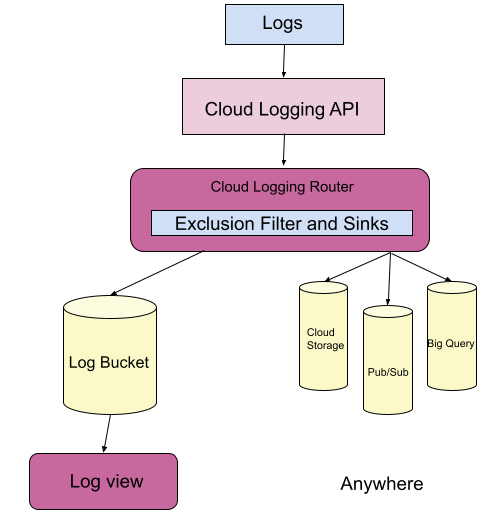What is CloudOps?
What is CloudOps?
27 October 2021
What is CloudOps?
Cloud Operations (CloudOps) is the best practice of managing performance and availability of cloud service to have maximum ROI such as maintaining the service, security and compliances, optimize operational cost, and other benefits of cloud computing and consumption of software in a computing environment where there is limited visibility into an app’s underlying infrastructure.
Role in managing the public cloud services:
An operations team focuses on monitoring, repairing, and remediating issues identified with customary IT activities and resources. In the cloud, a large number of the capital expenses and tasks exercises are moved to the cloud supplier, offering IT activities the chance to improve and offer huge extra benefits.
Following points of managing the role:
- Managing under and over utilized resources
- Migration of Data and Application
- Maintaining business continuity
- Security Risk management
- Maintain Compliance and Configuration
Why CloudOps?
Relocating applications to the cloud brings its own advantages, like opening up internal Infrastructure. However, what’s moved to the cloud actually should be overseen, and the work around keeping up with cloud-based applications and information remains generally equivalent to overseeing them on location. To do this, a CloudOps group should choose the right observing and computerization tools for the responsibilities that execute the cloud.
DevOps and CloudOps
DevOps is a collaborative method that looks to mix tasks customarily performed by either the association’s application improvement or their IT activities groups. A significant objective of DevOps is to advance better communication between the two groups and fabricate improvement pipelines that consider persistent incorporation. In contrast, the spotlight for CloudOps is on high accessibility (HA) and consistent activity in a public cloud.
How does CloudOps work?
- Monitoring : Collect metrics, analyze trends, set alert threshold and watch for outlier activity with alerts.
- Logging : Analyze logs for services generating outlier signals, to troubleshoot apps.
- Trace : Analyze how latencies are distributed across microservices in transaction.
- Profiler and Debugger : Profiler performance and debug to accelerate troubleshooting
CloudOps Pros and Cons
CloudOps pros include the following:
- It’s cost-effective.
- It’s easier than traditional approaches.
- It requires fewer resources than traditional approaches.
- Many steps can be automated.
- It can scale out and automatically provision servers.
- A cloud can abstract infrastructure from an application.
CloudOps cons includes the following:
- It is possible to overspend on over provisioned servers.
- There are limited governance abilities.
- Security with public cloud providers can be risky.
CloudOps Best Practice
The progress from on location workers to a public cloud supplier requires a critical change in outlook. Because of the rising fame of distributed computing, it’s a change numerous associations are currently embracing. Utilizing CloudOps related to DevOps offers your activity more speed, adaptability, and usefulness. Work with your group’s movement to CloudOps by executing the following best practices.
- Enable agility:
It’s fundamental that your security or administration group is completely installed with each part of distributed computing. In the event that groups neglect to cooperate and make utilization more troublesome, the final product will be less straightforward and an absence of generally cohesiveness. Try not to make more limitations; rather obviously characterize and carry out important rules. - Enable Clients:
Despite the fact that cloud assets require administration oversight and fitting setup for security and consistency, DevOps groups are answerable for the everyday utilization of the devices that deal with the cloud stage and would in a perfect world have contribution about assets. Permit clients to self-arrange their own machines, or to use auto-provisioning so applications demand more machines or diminishing limits dependent on use. - Automate security:
Reduce security risks by executing measures that utilize mechanization to test the setup of cloud assets. Automation security checks and setting up clear consistent strategies to be trailed by all groups guarantees consistency as your cloud impression develops and advances. Remediation can likewise be computerized, permitting engineers to relieve hazards without work process disturbance. - Implement redundancy:
One of the goals of the DevOps reasoning includes constant tasks and zero personal time. Cloud-based systems make constant activities possible since programming can be refreshed or sent without disturbance to the application or administration. Executing automation and redundancy at both the cloud supplier layer and the application layer guarantees that the application will be accessible in spite of updates or programming changes. - Streamline change management:
Reducing the time between thought improvement and item organization is one of the essential objectives of DevOps, but changing the board can create its own work process bottleneck. Support collaboration between cloud security and change the executives by setting up measures that will not ruin the improvement interaction. Automate the change demand tickets and coordinate an agile change in the executives system that supports all groups to work consistently. - Continuous improvement:
An effective CloudOps technique is certifiably not a one-size-fits-all method and can’t be refined in a solitary advance. A definitive objective is to coordinate a few groups with various concentrations and ranges of abilities into one completely incorporated activity. Accomplishing that requires an appraisal of existing qualities and shortcomings among colleagues and specialized techniques, just as choices about initiative, instruments, cycles, and spending the executives. Make an arrangement for the underlying temporary time frame, yet in addition for recognizing future advancement openings.


